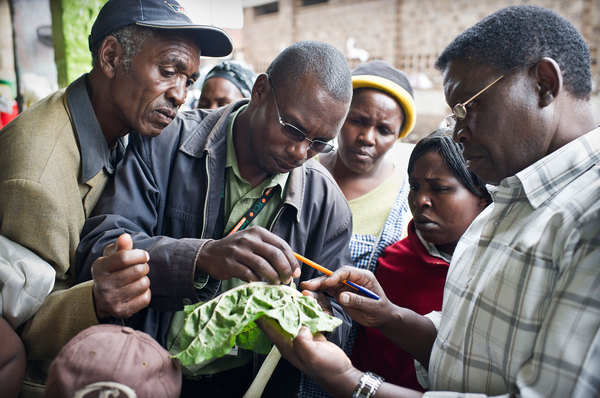Chilo worm outbreak threatening crops in Zimbabwe
Zimbabwe is currently facing a devastating outbreak of Chilo worm, a species of moth, which is threatening the 2016/17 summer cropping season. The exact species is yet to be confirmed and is also being referred to as the fall army worm.
CABI argues for stronger links between rural advisory services and research, private sector and ICTs
At a meeting of the world’s top agricultural scientists in China, CABI’s Executive Director for Global Operations, Dr Ulrich Kuhlmann, stressed the key role rural advisory services play in lifting agricultural communities out of poverty. As he pointed out, “Some of the most relevant and appropriate information isn’t high tech or innovative, but that doesn’t…
On International Tea Day, raise a cup to the growers
International Tea Day is observed annually on 15 December, and aims to raise awareness of the impact of the global tea trade on the farmers and agricultural labourers who produce tea. It has been celebrated since 2005 in tea producing countries such as Bangladesh, Sri Lanka, Nepal, Vietnam, Kenya, Malawi, Malaysia, Uganda, India and Tanzania…
Our favourite recipes – India
As part of our new mini-series, “Our favourite recipes”, here is the next delicious recipe for you to try from India. Baingan Bharta (Roasted mashed brinjals cooked with onions, tomatoes, green chillies and ginger) is one of the most popular dishes in India. Brinjal (aubergine/eggplant) is an important ingredient of the recipe.
Our favourite recipes – Sri Lanka
As part of our new mini-series, “Our favourite recipes”, here is the next delicious recipe for you to try. Coconut Sambal (Pol Sambola) is a staple dish in Sri Lanka. It is essentially a relish or salad which adds vibrancy to meals of rice and curry. Coconut is one of the main agricultural crops in…
International students graduate with Masters degree in crop management
A graduation ceremony took place on 17 November 2016, in Interlaken, Switzerland, to mark the successful completion of the 2016 Masters of Advanced Studies in Integrated Crop Management (MAS ICM) programme. The 12 agricultural professionals who participated in this year’s programme have gained valuable knowledge in sustainable crop management to apply back home and to…
Update: New Pest & Disease Records (17 Nov 16)
We’ve selected a few of the latest new geographic, host and species records for plant pests and diseases from CAB Abstracts. Records this fortnight include a report on new species of aphids of the Macrosiphini tribe from Kazakhstan, the first report of Caryedes brasiliensis preying on seeds of Dioclea violacea in Brazil and the first…
Our favourite recipes – Mozambique
Recipe courtesy of Joao A. Jeque Junior As part of our new mini-series “Our favourite recipes”, the second post has been written by Joao A. Jeque Junior, Plantwise knowledge bank intern from Mozambique. He tells us how to prepare Xiguinha de “mandioca” made from cassava. Xiguinha de “mandioca” Mandioca is the translated Portuguese name for…


